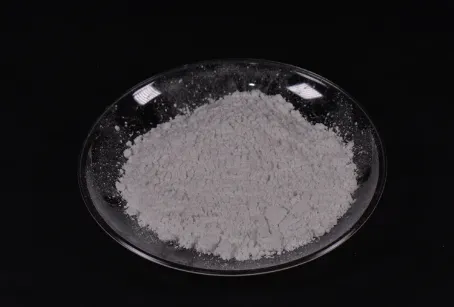Synthetic Mica vs. Natural Mica: Understanding the Differences
Mica is a versatile mineral widely used in industries such as cosmetics, crafts, and manufacturing due to its reflective and insulating properties. In recent years, synthetic mica wholesale has gained prominence as an alternative to natural mica. Known scientifically as synthetic fluorphlogopite, this lab-created material offers enhanced performance and consistency, making it particularly popular in applications like synthetic fluorphlogopite glitter and synthetic fluorphlogopite in makeup.

A key distinction between synthetic and natural mica lies in their crystal structures. This article explores these differences and explains why synthetic mica is increasingly favored for various applications.
Natural Mica: A Mineral with Variability
Natural mica is a naturally occurring silicate mineral with a layered crystal structure that allows it to be split into thin, flexible sheets. This property, known as basal cleavage, gives mica its characteristic shimmer and reflective qualities.
Key aspects of natural mica’s structure:
- Layered Composition: Composed of aluminum silicate minerals interspersed with potassium, magnesium, or iron.
- Natural Variations: Impurities and inconsistencies in the mineral’s structure can affect its color, clarity, and performance.
- Environmental Formation: Found in metamorphic and igneous rocks, natural mica forms over millions of years.
While natural mica is widely used, its variability and potential for containing impurities like heavy metals can be a limitation in high-precision applications, particularly in cosmetics.
Synthetic Mica: Engineered Perfection
Synthetic mica, or synthetic fluorphlogopite, is a lab-created version of natural mica, designed to mimic its structure while offering superior purity and performance. Its crystal structure is engineered to eliminate impurities and achieve consistent properties.
Characteristics of synthetic mica’s structure:
- Fluorine Substitution: Fluorine atoms replace hydroxyl groups in the crystal lattice, enhancing thermal stability and transparency.
- Uniform Layers: Consistent thickness and clarity across the layers result in a smoother, more reflective surface.
- Purity: Free from natural impurities like heavy metals, making it safer for cosmetic use.
Synthetic mica’s engineered structure makes it ideal for applications requiring high clarity, bright colors, and safety, such as synthetic fluorphlogopite glitter and cosmetic products.
Comparison of Crystal Structures
The crystal structure of synthetic mica differs from that of natural mica in several key ways:
Composition:
- Natural mica contains variable elements like iron and magnesium, contributing to its natural variations.
- Synthetic mica has a controlled composition, replacing hydroxyl groups with fluorine for enhanced stability and brightness.
Purity:
- Natural mica may include impurities such as heavy metals.
- Synthetic mica is virtually free of impurities, making it safer and more reliable.
Transparency and Reflection:
- Synthetic mica’s uniform layers improve light reflection and color vibrancy, outperforming natural mica in clarity.
Thermal and Chemical Stability:
- Synthetic mica offers better resistance to heat and chemical degradation due to its fluorine-substituted structure.
These differences highlight why synthetic mica is increasingly favored for demanding applications, including high-quality cosmetics.
Synthetic Fluorphlogopite in Makeup: Benefits and Applications
The use of synthetic fluorphlogopite in makeup has revolutionized cosmetic formulations. Its consistent quality and safety make it a preferred choice for high-performance products.
Benefits of synthetic mica in makeup:
- Enhanced Shimmer: Provides a brighter, more reflective finish than natural mica.
- Safe for Skin: Free from heavy metal contaminants, ensuring safety for sensitive skin.
- Vibrant Colors: Works seamlessly with pigments to create vivid, long-lasting shades.
- Smooth Texture: Contributes to the silky application of powders, creams, and glosses.
Applications include:
- Eyeshadows and Highlighters: For luminous, eye-catching effects.
- Lip Products: Adds sparkle and depth to lip glosses and lipsticks.
- Nail Polishes: Used in synthetic fluorphlogopite glitterfor bold, sparkling finishes.
Why Choose Synthetic Mica Wholesale
For manufacturers, sourcing synthetic mica wholesale provides several advantages:
- Cost Efficiency: Buying in bulk reduces costs for large-scale production.
- Consistent Quality: Ensures uniformity across batches, essential for precise formulations.
- Eco-Friendly Option: Synthetic mica eliminates the ethical concerns associated with natural mica mining, supporting sustainable practices.
With its superior performance and ethical advantages, synthetic mica is a smart choice for businesses across industries.
Synthetic Mica for Modern Applications
The crystal structure of synthetic mica, or synthetic fluorphlogopite, offers significant advantages over natural mica, including purity, stability, and enhanced reflective properties. Whether used in synthetic fluorphlogopite glitter, synthetic fluorphlogopite in makeup, or industrial applications, synthetic mica is redefining standards for quality and safety.
Explore the potential of synthetic mica wholesale to create high-performance, sustainable products that shine with brilliance and reliability!
-
Transforming Surfaces with Mica-Enhanced Paints in Coatings and DecorationNewsJul.02,2025
-
The Ultimate Guide to Mica-Based Luminous Colors with Pearlescent PigmentNewsJul.02,2025
-
The Critical Role of Mica in Industrial Applications in Welding and Oil FieldsNewsJul.02,2025
-
Revolutionizing Automotive Aesthetics with Modified Plastics Pearlescent PigmentsNewsJul.02,2025
-
The Secret with Mica Powder for Cosmetics Behind Radiant, Natural MakeupNewsJul.02,2025
-
Enhancing Performance in Polymer Applications with Mica Powder for RubberNewsJul.02,2025
Products categories









